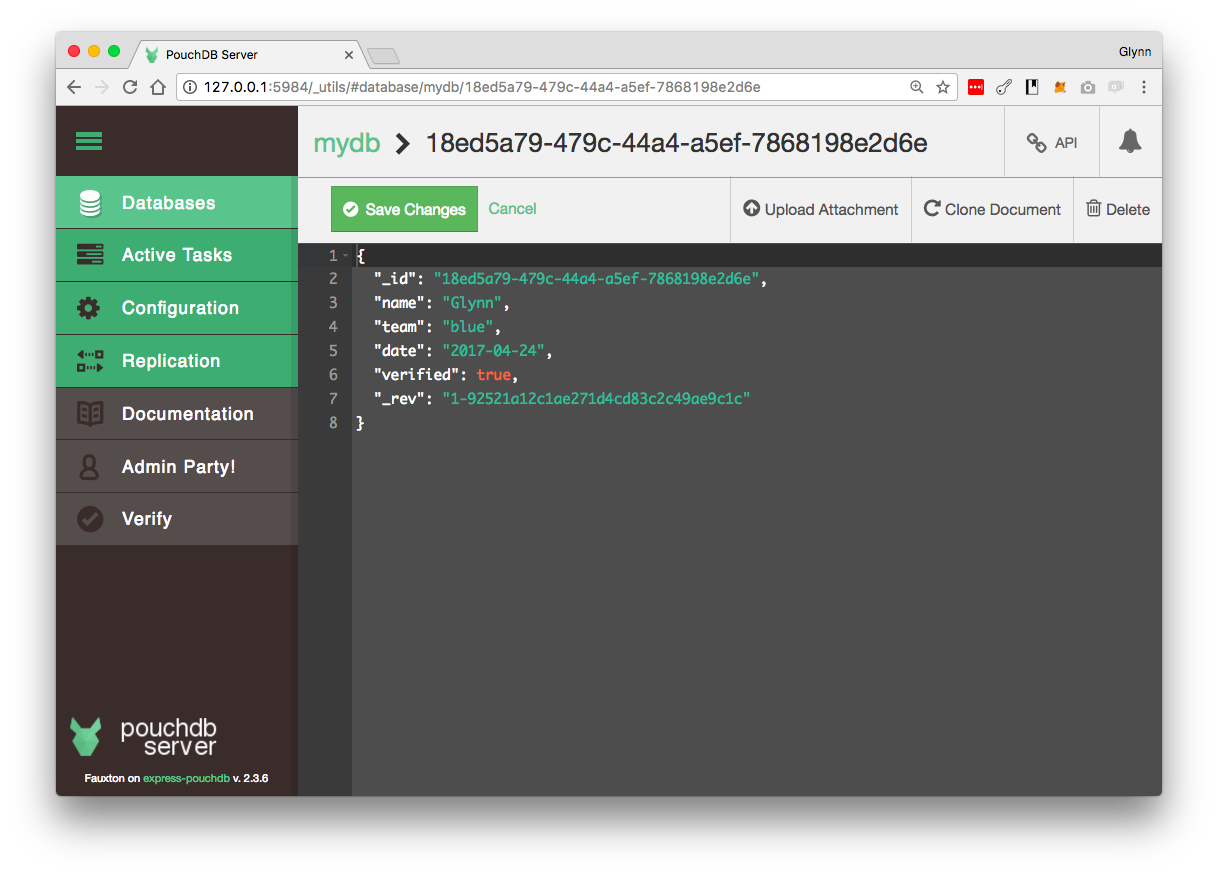PouchDB
PouchDB is a database. It’s a JSON document store to be precise, allowing you to create, read, update, delete and query your documents with a simple JavaScript API. It’s most commonly used in a browser, to keep data on the client side. Storing data within the browser allows your web applications to keep working, even when the network connection is flaky or non-existant - this is called an offline first approach. Offline first brings 100% uptime to web applications together with performance gains, better user experience and powers the Progressive Web App (PWA) movement.
PouchDB goes to great lengths to store data in a format that allows the client side to be disconnected from the server side, for both copies to be updated (even when updated in different ways) and for the data to synced without the loss of data. This is no mean feat - syncing data across a distributed systems is not a problem you want to tackle yourself and PouchDB solves it for you at a stroke.
PouchDB stands on the shoulders of the Apache CouchDB project which defines the protocol and the storage mechanism that allows the seamless syncing of data between occasionally connected replicas. PouchDB to CouchDB, PouchDB to Cloudant, PouchDB to PouchDB - you decide.
PouchDB - the in-browser database🔗
Storing data in a web application couldn’t be simpler. Get PouchDB into your web page’s code by which ever means you prefer and then write some JavaScript:
var db = new PouchDB('mydb');
var doc = {
name: 'Glynn',
team: 'blue',
date: '2017-03-24',
verified: true
};
db.put(doc);
Read documents back:
db.allDocs();
or run queries, calculate aggregations and lots more.
PouchDB - the server-side database🔗
You can also use PouchDB as the storage mechanism for your single-server, client-side Node.js application. Just npm install pouchdb and “require” the library into your code:
var PouchDB = require('pouchdb');
var db = new PouchDB('mydb');
and the rest of the code as the same as the client-side example.
PouchDB - the client library for CouchDB/Cloudant🔗
If you want to write client-side code that speaks to a remote CouchDB or Cloudant server, then you can use PouchDB as a client library:
var remotedb = new PouchDB('https://MYUSERNAME:MYPASSWORD@MYHOST.cloudant.com/mydb');
remotedb.put(doc);
By providing a URL instead of database name, PouchDB makes API calls to the remote database, using the same code as if it were a local database.
PouchDB - that syncing feeling🔗
Syncing data from client to server side copies is also painless. On the client side:
db.sync(remotedb);
That’s it. Two-way sync from your in-browser database to a remote copy. See the documentation for more examples, one-way sync and receiving update notifications.
PouchDB - the HTTP server🔗
If you want to run PouchDB as if it were an Apache CouchDB service, with HTTP API, dashboard and all, then you’re only a couple of commands away:
npm install -g pouchdb-server
pouchdb-server
Then visit http://127.0.0.1:5984/_utils/ in your browser to see the dashboard - apart from the colour scheme, you’d be hard-pushed to notice the difference between this and full-fat CouchDB.

PouchDB - the app data layer🔗
If you are building Apache Cordova-based native mobile applications or Electron-based desktop apps, then PouchDB can be included in the project and used to provide the data storage API. Storing data with PouchDB unlocks your app’s ability to sync its data to the server allowing your app to uncouple from the network and roam free, as apps were intended to do!
PouchDB - plug in for extra functionality🔗
By adding other plugins, PouchDB can be extended to perform peer-to-peer sync, social media authentication, framework integration and much more.
PouchDB - where’s the catch?🔗
How much does this cost? What are the licensing restrictions? Where do I enter my credit card details? PouchDB is a free, open-source project maintained by volunteers. You are free to use it in your own projects within the generous provisions of the Apache-2.0 license, so what are you waiting for?